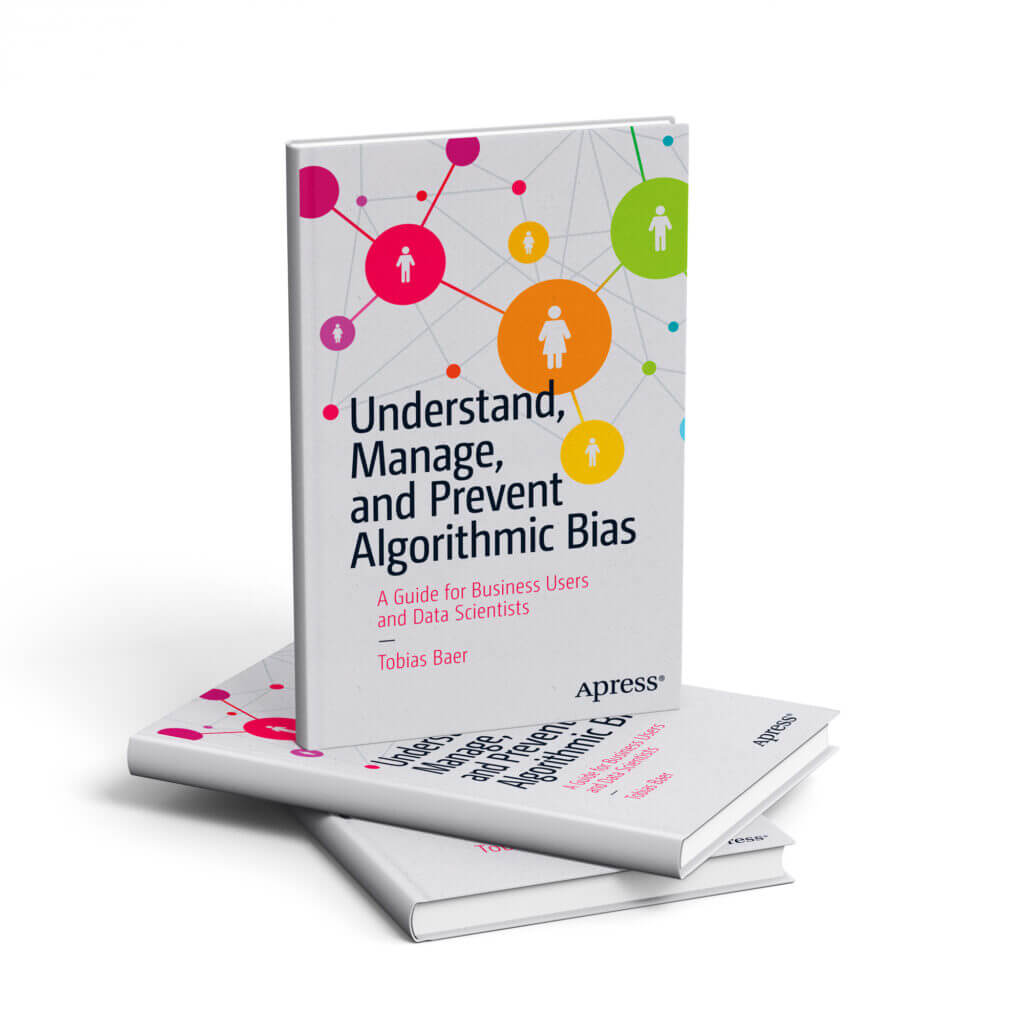
Understand, Manage, and Prevent Algorithmic Bias
A book by Tobias Baer
Why algorithmic biases?

Algorithmic bias impacts everything from social media feeds to life-altering decisions, often disadvantaging specific groups or small businesses. For instance, algorithms like COMPAS have shown racial bias in predicting re-offense rates, and job ad algorithms have been found to favor lower-paying roles for women. My book examines the many sources of bias—statistical, psychological, and societal—and offers actionable solutions to prevent it.
The book provides a comprehensive guide for both data scientists and business leaders, detailing techniques to manage bias, from statistical tools to holistic measures in business processes. It also explores how algorithms can reduce biases in human decisions, highlights the societal impact of bias, and discusses possible regulatory responses.
Written for professionals across industries, students, and concerned citizens, this book is about building fairer systems, making better decisions, and eliminating harmful biases.
See the book’s table of content
Part I: An Introduction to Biases and Algorithms
Chapter 1: Introduction
Chapter 2: Bias in Human Decision-Making
Chapter 3: How Algorithms Debias Decisions
Chapter 4: The Model Development Process
Chapter 5: Machine Learning in a Nutshell
Part II: Where Does Algorithmic Bias Come From?
Chapter 6: How Real-World Biases Are Mirrored by Algorithms
Chapter 7: Data Scientists’ Biases
Chapter 8: How Data Can Introduce Biases
Chapter 9: The Stability Bias of Algorithms
Chapter 10: Biases Introduced by the Algorithm Itself
Chapter 11: Algorithmic Biases and Social Media
Part III: What to Do About Algorithmic Bias from a User Perspective
Chapter 12: Options for Decision-Making
Chapter 13: Assessing the Risk of Algorithmic Bias
Chapter 14: How to Use Algorithms Safely
Chapter 15: How to Detect Algorithmic Biases
Chapter 16: Managerial Strategies for Correcting Algorithmic Bias
Chapter 17: How to Generate Unbiased Data
Part IV: What to Do About Algorithmic Bias from a Data Scientist’s Perspective
Chapter 18: The Data Scientist’s Role in Overcoming Algorithmic Bias
Chapter 19: An X-Ray Exam of Your Data
Chapter 20: When to Use Machine Learning
Chapter 21: How to Marry Machine Learning with Traditional Methods
Chapter 22: How to Prevent Bias in Self-Improving Models
Chapter 23: How to Institutionalize Debiasing
Read an excerpt
It’s not just the data — it’s the system
Discover how biases in algorithms and decision-making impact organizations—and how to prevent them. My book offers practical, actionable strategies for data scientists and business leaders to tackle algorithmic bias effectively.
Watch the 2½-minute video below for key highlights!
